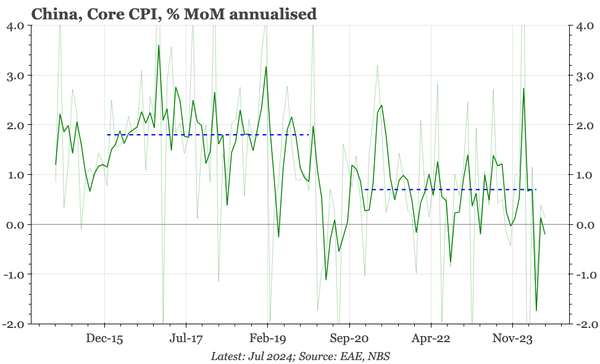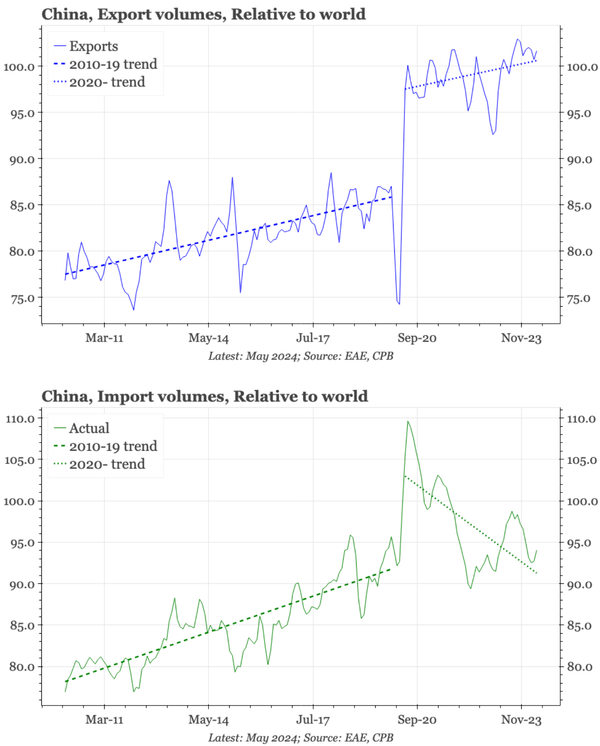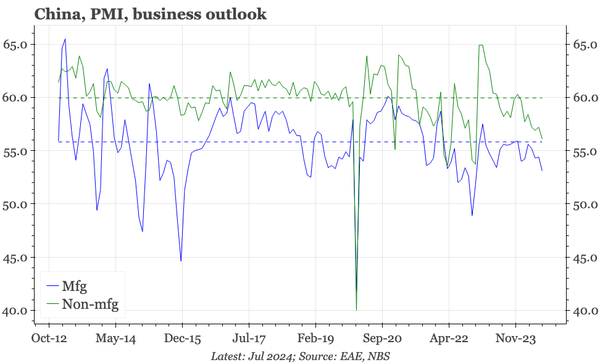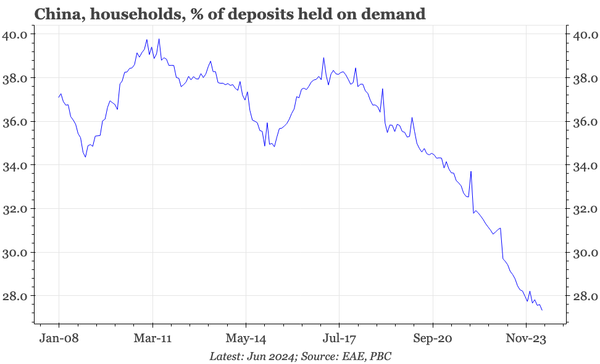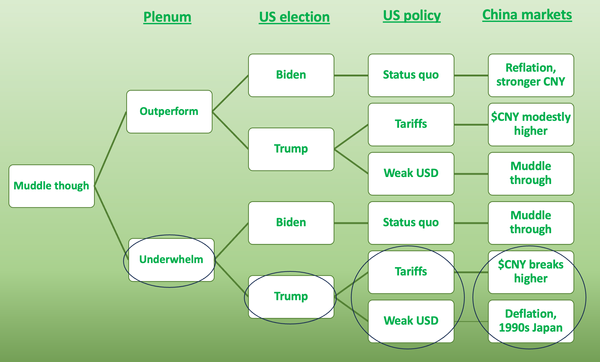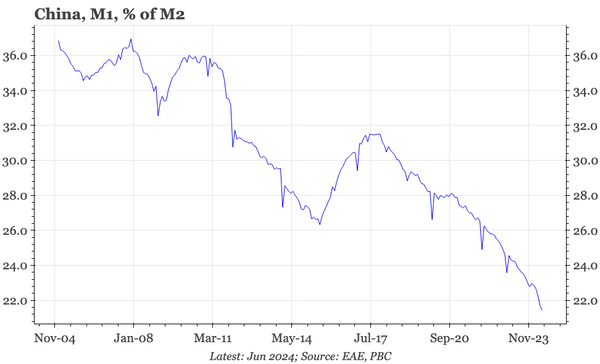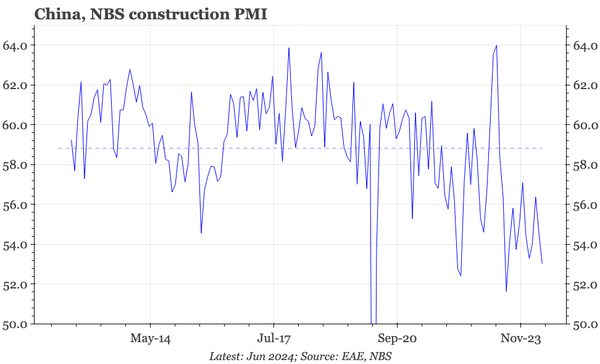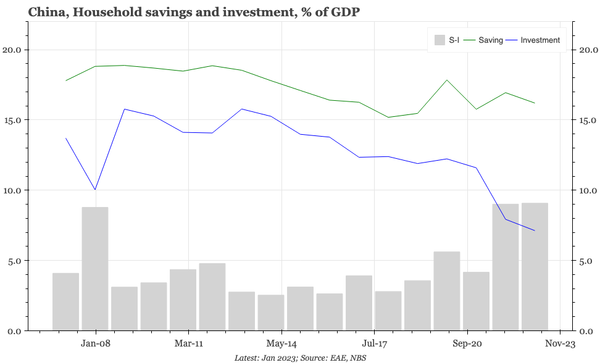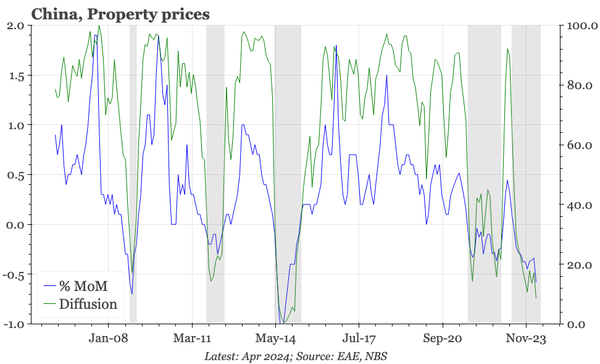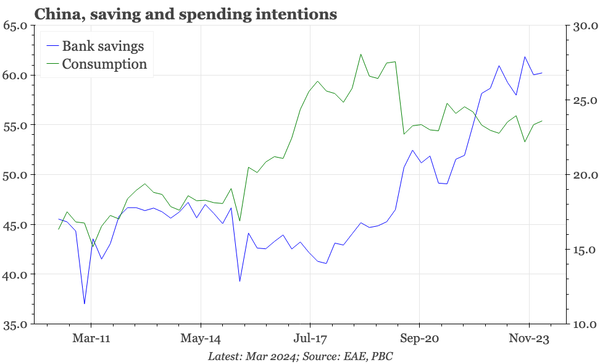China – still the new normal

The PBC's Q2 survey shows consumption not especially weak, with the real post-20 changes in household behaviour being a shift from spending on goods to services, and from saving as property and riskier investments back to banks. The corporate survey wasn't bad either, but loan demand fell sharply.

